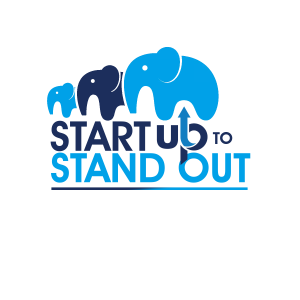How Universities Can Leverage AI for Advantages and Navigate Pitfalls
In the 21st century, technology continues to reshape the world. Artificial Intelligence (AI), having immense potential to automate many processes and augment human capabilities, has emerged as a transformative technology, influencing almost every sector, including education.
As traditional teaching methods evolve with technological advancement, educational institutions are recognising the significance of leveraging AI in education and understanding how it unlocks new possibilities to enhance the teaching and learning experience.
However, while acknowledging the potential of AI, addressing the challenges and ethical considerations is also crucial to ensure its responsible use in educational institutions. Here are the ways of leveraging AI in universities and pitfalls to avoid.
Advantages of leveraging AI in Universities
● Enrolment and Admissions
Universities can utilise AI algorithms to streamline and enhance various aspects of the admissions process. Utilising AI-driven predictive models based on a range of factors (academic history, extracurricular activities, etc.), they can predict an applicant’s fit within the institution and filter through a huge number of applications efficiently. Universities can experiment with AI-based interviewing tools that enable them to standardise the interview process and make fairer evaluations.
● Enhanced Learning Experience
Universities can utilise AI to revolutionise the learning experience for students in several ways. Intelligent Tutoring Systems (ITS) powered by AI can provide personalised learning trails for students, catering to their learning abilities. ITS can track student performance in real-time, analyse student progress, identify learning gaps, identify areas of improvement, and deliver resources as per requirement. It can help to increase engagement and better academic results. Universities can provide personalised support and feedback using ITS that can help students master complex concepts with a deeper understanding of the subject matter.
● Efficient Administrative Processes
AI can streamline administrative tasks within universities, saving invaluable time and resources. They can adopt AI-powered chatbots to handle routine queries from students, faculty, and staff. Administrative personnel can focus on other complex and important tasks. Institutions can optimise resource allocation to improve overall operational efficiency, for instance, facility management, etc.
● Research and Data Analysis
Advancing Research and Data Analysis: Universities can utilise AI for significant impacts on their research capabilities. AI enables them to process vast data quickly that can assist researchers in deep data analysis quickly, identifying patterns and trends that might otherwise be overlooked. Ultimately, AI algorithms help universities to accelerate the pace of innovation and discovery.
● AI Teaching Aids
AI-powered teaching aids allow faculty to create engaging and interactive learning experiences. With the help of AI-based tools, like augmented reality (AR) and Virtual reality (VR) applications, they can offer immersive learning environments, allowing students to explore concepts in a more hands-on way.
● Boost Recruitment and Fundraising
Recruitment and fundraising teams in universities can also leverage AI tools to increase their reach. Universities can enhance their efforts in recruitment and fundraising using AI. By analysing large sets of data, AI-driven marketing, and personalised outreach can increase the university’s visibility, attracting more students as well as prospective donors. They can use AI tools to craft engaging and personalised content, email campaigns and social media posts.
Pitfalls to Avoid
– Lack of Strategic Vision
Implementing AI technologies without a strategic plan can lead to inefficiencies, and missed opportunities.
– No Training at all for AI-fluent Workforce
AI tools are already pinned in many workplaces. Educational institutes can not ignore that AI’s presence will only grow over time. Therefore, basic AI Literacy in the Curriculum is crucial.
– Over Reliance on AI
AI offers flexibility. But we can not hope the tool will sort out everything. Let us take an example of content generation. Keep in mind that AI-led content can also have a tendency of off-beating and it is necessary to realise the necessity of human curators.
– Neglecting to raise awareness about the risks associated with AI
AI models can have concerns about privacy and data security if sensitive information is carelessly shared. Also, AI-based models can generate inappropriate or offensive responses, leading to ethical issues.
How NICMAR Navigate AI Pitfalls Safely
NICMAR (National Institute of Construction Management and Research), a premier academic institution focused on construction and allied industries, introduces technology in the learning environment and navigates pitfalls in the following ways:
1. Creating an Aspiring Environment
NICMAR emphasises the significance and potential of AI in the CRIP (Construction, Real Estate, Infrastructure and Project management) sector while offering to learn about AI-driven tools. Highlighting successful applications of EdTech and AI in the sector and offering hands-on learning opportunities inspires students to learn about the safe use of AI technology.
2. Developing a Strategic Vision for AI Implementation
Before implementing AI, NICMAR ensures to establish a clear and well-defined strategic vision – identifying how AI aligns with the institute’s mission. Identifying the areas, such as personalised learning, research support, or administrative optimization, and defining the objectives to achieve help the institution prioritise resources and efforts and maximise the benefits of AI applications.
3. Balancing AI automation with the personalised human touch
NICMAR utilises AI-powered chatbots and virtual assistants to help engage prospective students. They can provide information about courses, campus, financial aid, and other common aspects. However, we understand the requirement of the human touch and significance of an open communication policy. We understand that AI-driven approaches can help with feedback, but direct interaction with faculty and mentors remains essential for us.
4. Raising Awareness about Potential Pitfalls and Challenges
Awareness campaigns are crucial for students to mitigate AI-related risks substantially. We encourage training programs explaining ways to leverage AI capabilities safely. We include the use of advanced technology in our curriculum also. Students can gain expertise in advanced digitised tools and techniques through our programs, like Civil Engineering, that help achieve results in a futuristic construction environment.
5. Seeking Feedback and Making Necessary Adjustments
NICMAR should always seek feedback from students, faculty, and industry partners to identify the areas for improvement, address consequences, and align AI implementation to meet our institutional goals.
The Closing
From intelligent tutoring methods to adaptive learning platforms, AI technology offers a myriad of opportunities to cater to diverse learning styles and encourage engagement. Universities or educational institutes can optimise processes, foster effective approaches to education and revolutionise how knowledge is imparted, absorbed, and assessed. Moreover, by processing huge data volumes, AI-enabled tools can provide insights into student performance, identifying areas of improvement and customising educational content accordingly. However, it is crucial to leverage AI ethically and responsibly for maximum benefits. Renowned institutions, like NICMAR University, understand their responsibilities and continue to take the necessary actions to ensure a safe AI-based learning environment.
Recent Posts
- Impact of Peer Pressure on Career Choices August 17, 2023
- How Universities Can Leverage AI for Advantages and Navigate Pitfalls July 25, 2023
- NICMAR Meeting Strong Industry-Academia Partnership Needs July 13, 2023
- Late Kanwar Surjit Singh: A Visionary Leader and Inspiration July 8, 2023
- Utilise your University as a Springboard for Skills and Growth June 27, 2023






